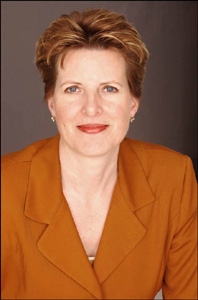
Having just gotten three emails in the last month that begin with "Dear Andrea," I can't tell you enough how important the topic of data hygiene is for marketers. I can assure you that addressing a person named John Balla as "Andrea" is the fastest way to get John Balla to disregard your message and unsubscribe.
I am happy to share this post from noted marketing expert Ruth P. Stevens about "data hygiene." Considering the pivotal role of big data in today's marketing success, it's important to stop and consider the ways we acquire and manage our data because not doing it well causes problems that can balloon quickly.
Ruth's thoughts on this topic have already been surfaced in Biznology, on Target Marketing's blog and most recently on LinkedIn. Her perspective fits right into our ongoing conversation here about customer analytics, so please read on.
------------
Are you happy with the quality of the information in your marketing database? Probably not. A new report from NetProspex confirms: 64% of company records in the database of a typical B2B marketer have no phone number attached. Pretty much eliminates phone as a reliable communications medium, doesn’t it? And 88% are missing basic firmographic data, like industry, revenue or employee size—so profiling and segmentation is pretty tough. In fact, Netprospex report concluded that 84% of B2B marketing databases are “barely functional.” Yipes. So, what can you do about it?
This is not a new problem. Dun & Bradstreet reports regularly on how quickly B2B data degrades. Get this: Every year, in the U.S., business postal addresses change at a rate of 20.7%. If your customer is a new business, the rate is 27.3%. Phone numbers change at the rate of 18%, and 22.7% among new businesses. Even company names fluctuate: 12.4% overall, and a staggering 36.4% percent among new businesses.
No wonder your sales force is always complaining that your data is no good (although they probably use more colorful words)? Here are 5 steps you can take to maintain data accuracy, a process known as “data hygiene:”
1. Key enter the data correctly in the first place.
Sounds obvious, but it’s often overlooked. This means following address guidelines from the Postal Service (for example, USPS Publication 28), and standardizing such complex things as job functions and company names. But it also means training for your key-entry personnel. These folks are often at the bottom of the status heap, but they are handling one of your most important corporate assets. So give them the respect they deserve.
2. Harness customer-facing personnel to update the data.
Leverage the access of customer-facing personnel to fresh contact information. Train and motivate call center personnel, customer service, salespeople, and distributors—anyone with direct customer contact—to request updated information at each meeting. When it comes to sales people, this is an entirely debatable matter. You want sales people selling, not entering data. But it’s worth at least a conversation to see if you can come up with a painless way to extract fresh contact updates as sales people interact with their accounts.
3. Use data-cleansing software, internally or from a service provider, and delete obsolete records. Use the software tools that are available, which will de-duplicate, standardize, and sometimes append missing fields. These won’t correct much—it’s mostly email and postal address standardization—but they will save you time, and they are much cheaper than other methods.
4. Allow customers access to their record online, so they can make changes.
Consider setting up a Customer Preference Center, where customers can manage the data you have on them, and indicate how they want to hear from you. Offer a premium or incentive, or even a discount, to obtain higher levels of compliance.
5. Outbound phone or email to verify, especially to top customers.
Segment your file, and conduct outbound confirmation campaigns for the highest value accounts. This can be by mail, email, or telephone, and done annually. When you have some results, decide whether to put your less valuable accounts through the same process.
Do you have any favorite hygiene techniques to add to my list?
------------
Once you've gotten your data in order, then you can really take your marketing to the next level with analytically-driven marketing solutions. For more details, I suggest you take a look at this paper - a Marketer's Guide to Analytics. It's a great starting point for applying analytics in your marketing organization. If you'd like to delve a little deeper into data quality first, why don't you start with our Data Quality page. If you remember nothing else, remember this:
Better data means better marketing.
We're pleased to be able to bring Ruth's perspectives to this blog. Her long list of accomplishments includes books, speaking engagements and university-level teaching at leading business schools around the globe in a wide range of marketing topics. More details about Ruth are available at http://www.ruthstevens.com. You can also follow her on Twitter at @RuthPStevens.
As always, thanks for following! And no - you may not call me Andrea. :)

1 Comment
Pingback: Your customers are already omni-channel. Are you? - Customer Analytics